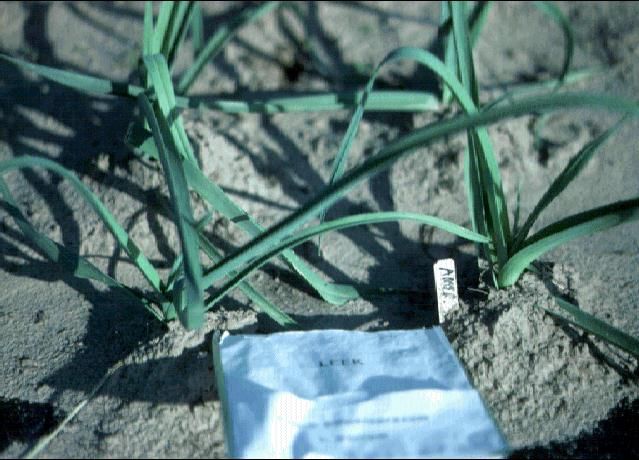Leek—Allium ampeloprasum L. (Porrum group)1
The leek is a biennial that is grown as an annual for its long blanched or unblanched stems. It forms a thick, fleshy structure like a large green onion plant without a bulb. It is attractive in appearance with its silvery base and green top.

Credit: James M. Stephens, UF/IFAS
Description and Use
The leaves of some varieties are blue-green, while others are yellow-green. The leaves are flat, in contrast to the round ones of the onion, and are arranged in a fan-like manner. The thick leaf bases and slightly developed bulb are eaten as a cooked vegetable or raw with or without attached leaves. The green leaves may be eaten and have a pungent odor and acrid taste. They are used more for flavoring in salads and cooked dishes. A favorite dish for many gardeners is leek soup.
Culture
Leeks can withstand a considerable amount of exposure to temperatures below 32°F. Start leeks from seeds or transplants in the fall and grow them very much like onions. Leeks require almost 5 months from seeding to harvest when grown in the winter in Florida.
Leek varieties that have done well in Florida trials are 'Electra,' which has a short shank (bulbous portion), and 'King Richard,' which has a longer shank.


